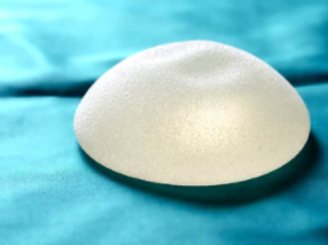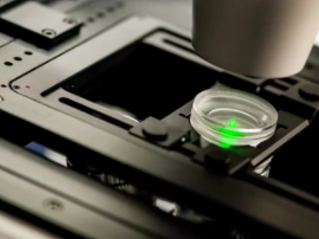Breast Implant Analysis Using the iEM Platform

Breast implants are commonly used medical devices under the breast tissue or chest muscle for breast cancer, trauma, or cosmetic reasons. Over the past years, technical alterations and advancements in breast implants have improved the results of surgery. The composition of biomaterials used in breast implants and the degree of texturing of the outer elastomer have been modified. As a result, there is a wide array of implant types and surfaces can be selected to best suit each patient and individual breast anatomy. Based on the iEM Platform, Creative Biostructure is committed to providing accurate and reliable breast implant analysis in basic research.
Breast Implants and Their Surface Properties
So far, there are two types of breast implants approved for sale in the US, namely saline-filled implant and silicone gel-filled implant. They both have a silicone outer shell, but are different in size, shell thickness, shell surface texture, and shape. Most commercially available breast implants have some degree of elastomer surface modification to increase surface roughness, in part because the positive outcomes from texturizing have been demonstrated in several clinical studies. However, the textured implants have been reported to support higher bacterial growth rates and are associated with host response in vivo (such as capsular contracture) and anaplastic large-cell lymphoma (ALCL). In recent years, there has been increasing research into the physiology of breast implant surfaces, invovling the introduction of new surface technologies and how they interact with the body.
Breast Implant Analysis at the iEM Platform
Understanding the surface characteristics of breast implants is important in the field of implantation. They are not only related to aesthetics, but also affect long-term clinical complications. The shell textures of breast implants can be characterized using scanning electron microscopy (SEM), confocal laser scanning microscopy (CLSM), and so on. SEM is used to generate high-quality images of surface structures. CLSM is commonly used to determine roughness and surface area (SA) as well as various material properties.
- Texturing analysis of breast implants
Breast implants are textured to reduce the risk of related complications. Manufacturers use unique and sometimes patented techniques to texture the surface of their implants. SEM is applied to investigate the integrity of implant surface structure texturing and the propensity for the surfaces to shed particulate matter.
- Surface Characterization of breast implants

In addition to implant surface texture, physical properties of breast implant surfaces, such as SA, average roughness (Ra), skewness/ kurtosis are also important considerations during implant selection. SA is an important parameter for evaluating different surfaces. Surface roughness is another relevant parameters, defined as variations in surface height relative to the reference plane. Besides surface roughness, skewness (Sku) and kurtosis (Ku) are two other height descriptors. They are not measured parameters per se, but rather a statistical tool used to assess the location and variability of a data set. CLSM is applied to characterize the topographical features of breast implants.
Application of Our Services
- Promote the development of nanosurface technology in breast implants.
- Investigation of fibroblast response in retrieved breast implants.
Thanks for your interest in our techniques or solutions. Please feel free to contact us. We are always open to your questions and are happy to support you.

